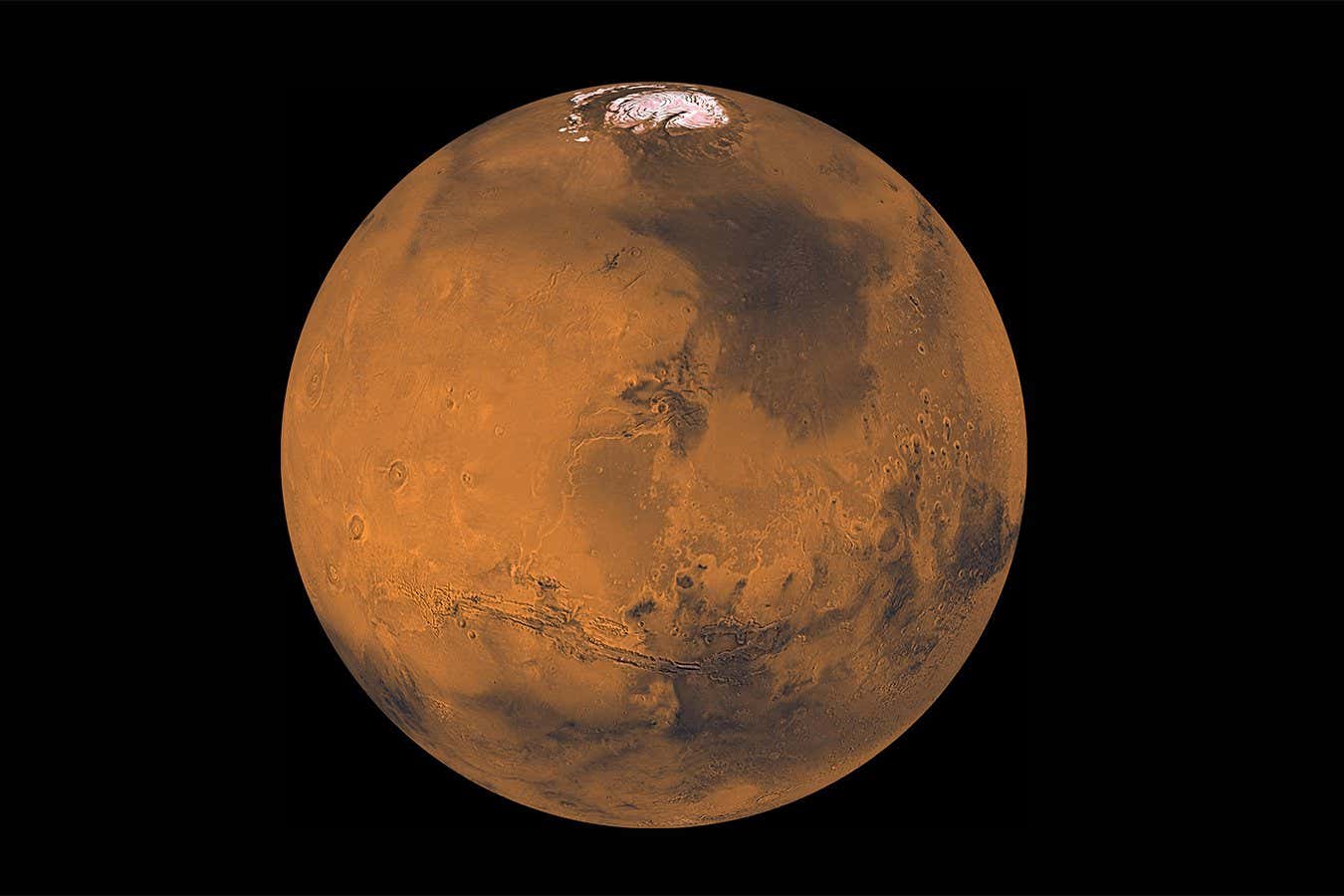While Mars today only has a wispy remnant of an atmosphere, it may once have had one hundreds of times thicker with a pressure three times that on Earth
By Alex Wilkins
15 September 2025
Modern Mars barely has an atmosphere
NASA/JPL/USGS
Mars’s atmosphere may have once been hundreds of times thicker than it is today, acting as a blanket that protected it from frequent asteroids that ravaged other planets.
While the sun and most planets were still forming around 4 million years after the origin of the solar system, Mars was already almost complete. At this time, the planets existed in a vast ball of hot gas and dust that swirled around the young sun, called the solar nebula, which some planets would have temporarily absorbed into their atmospheres. However, once the solar nebula receded, it was thought that the planets would quickly have lost this gas, reducing the densities of their atmospheres.
Read more
The sun is killing off SpaceX's Starlink satellites
Now, Sarah Joiret at Collège de France in Paris and her colleagues think that Mars may have clung on to its gas for longer, forming a soupy primordial atmosphere that persisted.
Shortly after the nebula receded, astronomers think the orbits of giant planets like Jupiter and Saturn shifted, which had the knock-on effect of disturbing the orbits of comets and asteroids, sending them hurtling towards the inner solar system where they bombarded the rocky planets. We can find evidence of this bombardment in the chemical signatures of rocks on Earth and in our atmosphere, but evidence of it is weaker on Mars.
“All terrestrial planets were bombarded by comets during this phase, and Mars cannot have avoided it, so we should see a trace of this cometary bombardment on Mars,” Joiret told the Europlanet Science Congress in Helsinki, Finland, on 11 September.
